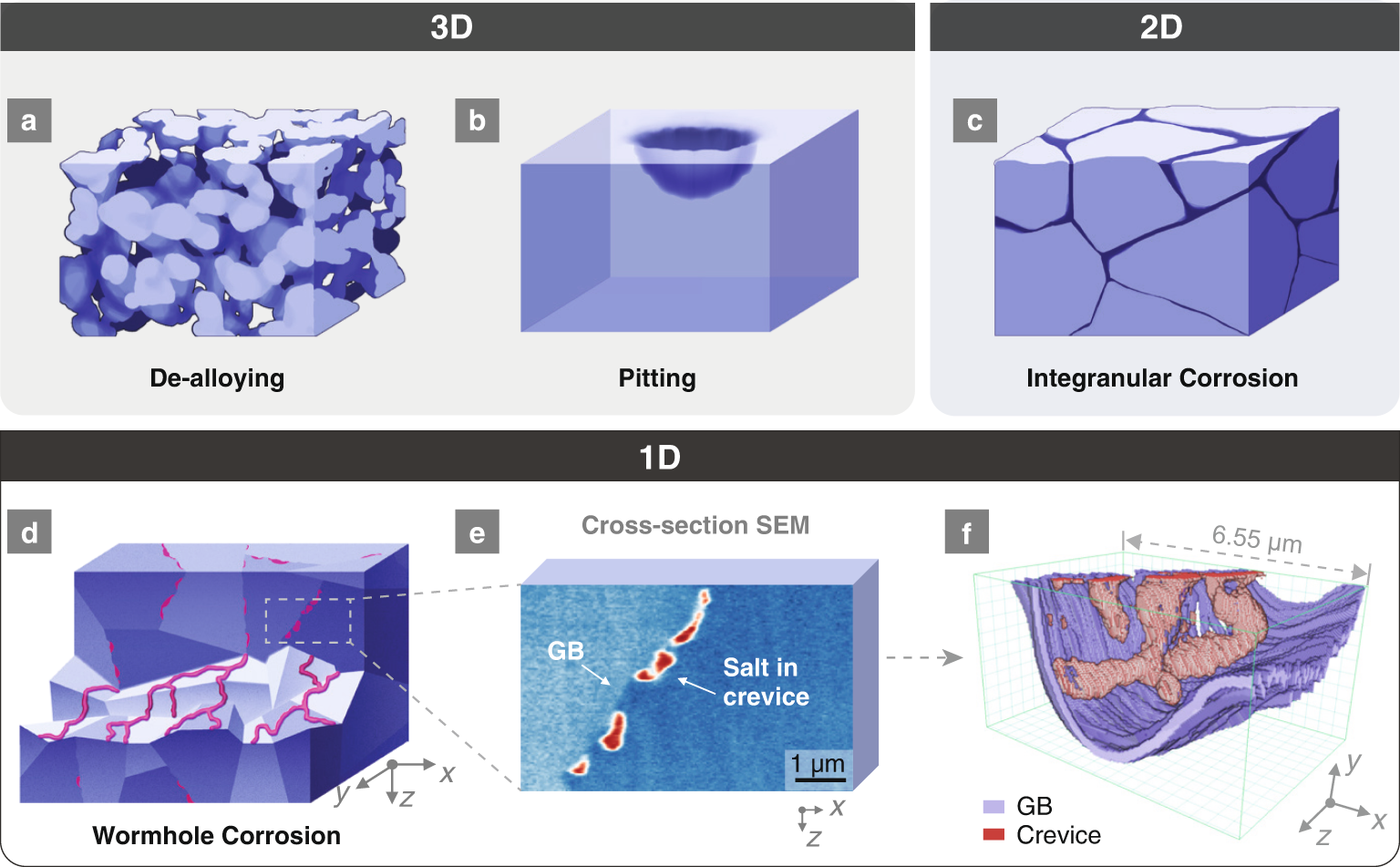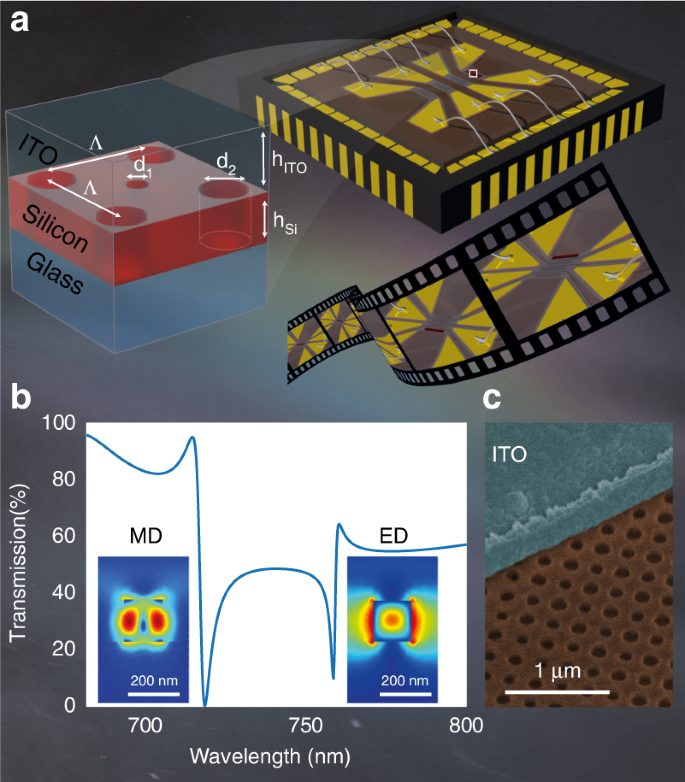一次元ワームホールの腐食を制御することで、発電所の設計を高度化できる可能性がある Controlling one-dimensional wormhole corrosion could help advance power plant designs
2023-02-22 ペンシルベニア州立大学(PennState)
◆研究チームは、その答えを『Nature Communications』誌に発表した。
◆「ペンシルベニア州立大学工学部機械工学科および原子力工学科のヤン・ヤン助教授は、「材料のどこにでもある破壊モードである腐食は、従来は3次元または2次元で測定されていました。また、ローレンス・バークレー国立研究所の国立電子顕微鏡センターとペンシルベニア州立大学材料研究所にも所属しています。”我々は、この浸透腐食が非常に局所的で、ワームホールのような一次元にしか存在しないことを発見しました。”
◆楊斌氏と研究チームは、溶融塩が金属をどのように「掘る」のかを調べるために、新しいツールと解析手法を開発した。楊斌氏は、今回の成果は、腐食の形態に関する新しいメカニズムを明らかにしただけでなく、このような構造を意図的に設計することで、より高度な材料を実現できる可能性を示していると述べている。
◆研究チームは、ワームホールの形成は、材料中の空孔(原子を取り除くとできる空の部位)の例外的な濃度に関係していると仮定した。この仮説を証明するため、研究チームは4次元走査透過電子顕微鏡と理論計算を組み合わせ、材料中の空孔を特定した。これにより、材料の原子配列に含まれる空孔をナノメートルのスケールでマッピングすることができた。その結果、従来の検出方法よりも1万倍も高い解像度が得られたと、ヤンは言う。
◆原子炉冷却材に加えて、材料合成の反応媒体、リサイクル溶剤などとして使用できる溶融塩は、腐食中に材料から原子を選択的に除去し、金属中の粒界と呼ばれる2次元欠陥に沿って1次元ワームホールを形成しています。研究者らは、溶融塩がさまざまな金属合金の空隙を独特の方法で埋めていることを突き止めた。
◆研究者たちは、溶融塩が特定の金属をどのように通過するのか、また、塩や金属の種類によってどのように変化するのかをよりよく理解できたので、この物理学を応用して、材料の破損をよりよく予測し、より耐性のある材料を設計したいと述べています。
<関連情報>
- https://www.psu.edu/news/engineering/story/scientists-identify-new-mechanism-corrosion/
- https://www.nature.com/articles/s41467-023-36588-9
金属中の一次元ワームホール腐食 One dimensional wormhole corrosion in metals
Yang Yang,Weiyue Zhou,Sheng Yin,Sarah Y. Wang,Qin Yu,Matthew J. Olszta,Ya-Qian Zhang,Steven E. Zeltmann,Mingda Li,Miaomiao Jin,Daniel K. Schreiber,Jim Ciston,M. C. Scott,John R. Scully,Robert O. Ritchie,Mark Asta,Ju Li,Michael P. Short & Andrew M. Minor
Nature Communications Published:22 February 2023
DOI:https://doi.org/10.1038/s41467-023-36588-9

Abstract
Corrosion is a ubiquitous failure mode of materials. Often, the progression of localized corrosion is accompanied by the evolution of porosity in materials previously reported to be either three-dimensional or two-dimensional. However, using new tools and analysis techniques, we have realized that a more localized form of corrosion, which we call 1D wormhole corrosion, has previously been miscategorized in some situations. Using electron tomography, we show multiple examples of this 1D and percolating morphology. To understand the origin of this mechanism in a Ni-Cr alloy corroded by molten salt, we combined energy-filtered four-dimensional scanning transmission electron microscopy and ab initio density functional theory calculations to develop a vacancy mapping method with nanometer-resolution, identifying a remarkably high vacancy concentration in the diffusion-induced grain boundary migration zone, up to 100 times the equilibrium value at the melting point. Deciphering the origins of 1D corrosion is an important step towards designing structural materials with enhanced corrosion resistance.



